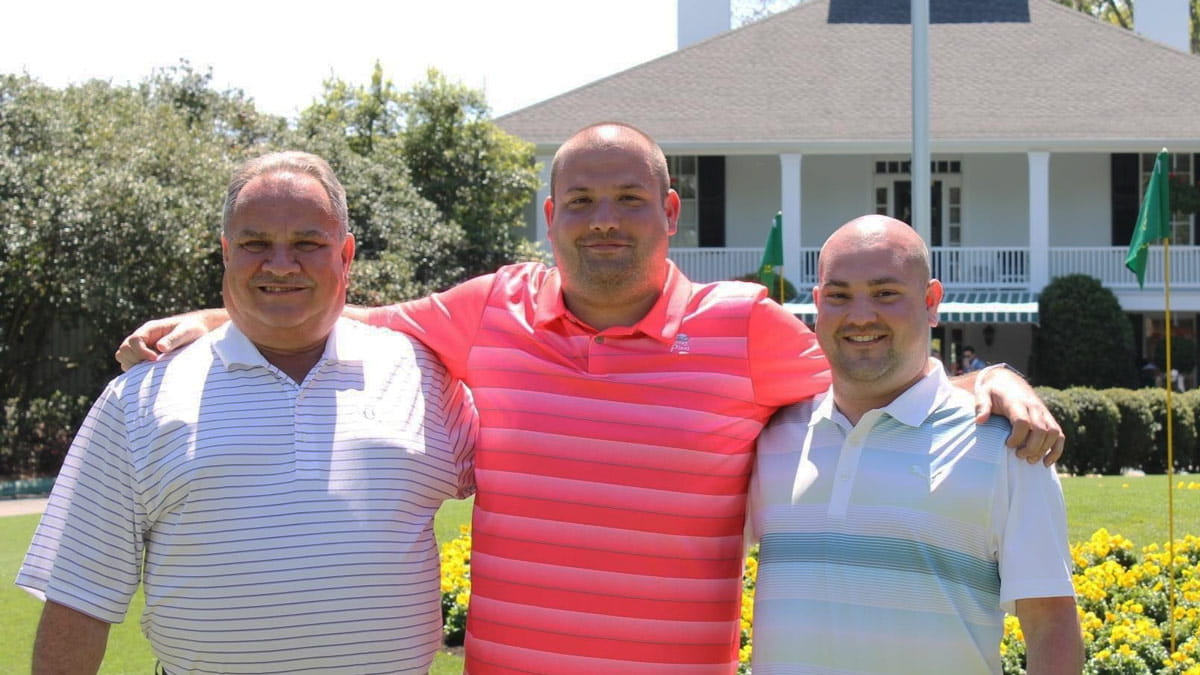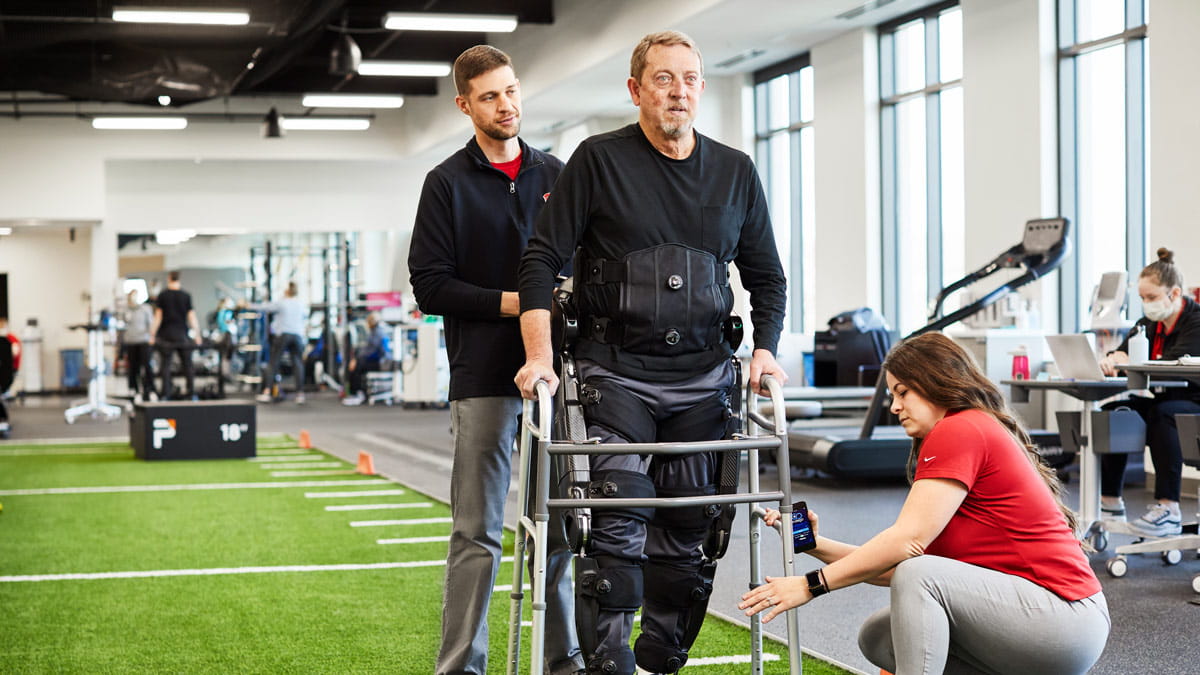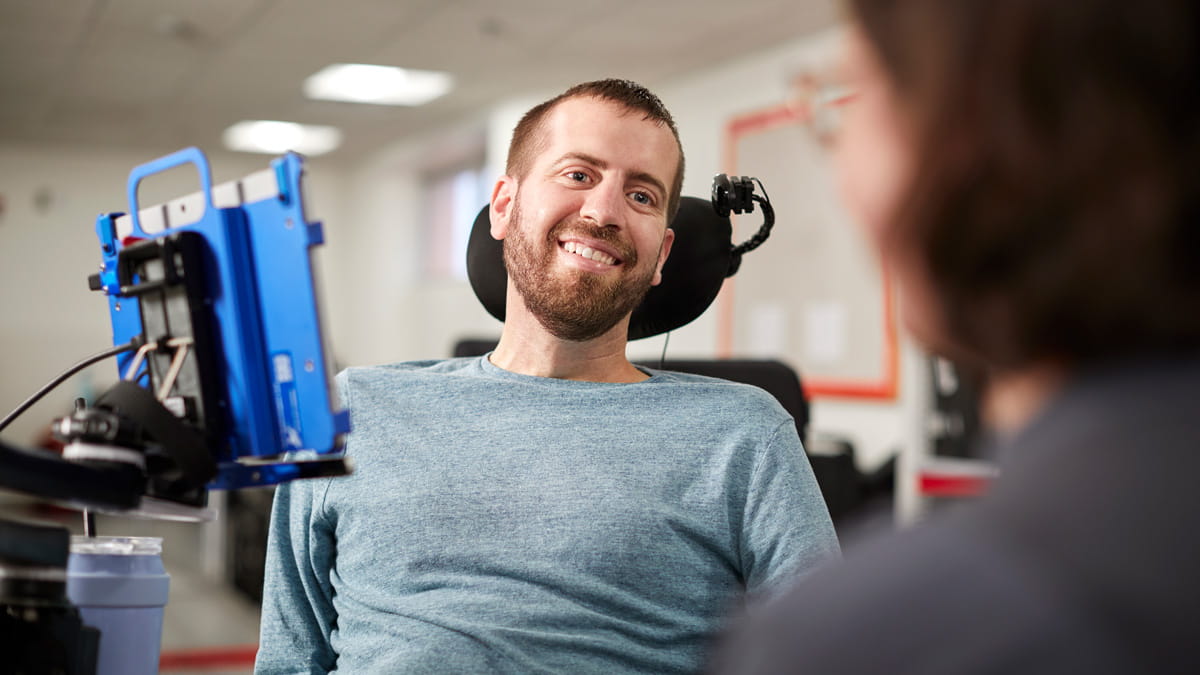Getting the most out of life with a neurological disorder
Nick Kale, living with spinal muscular atrophy

Image above: Nick (right) is pictured here with his father and brother at the golf course.
Nick Kale watched his teenage brother go from effortlessly racing down the stairs for dinner to needing to grip the rails and take one careful step at a time. Sometimes he’d fall.
Years later, Nick struggled to scale the very same set of stairs. On the golf course, his swing weakened. He couldn’t stand up from a chair quickly and not without pushing off with both hands. If he tripped, he couldn’t get back up on his own.
After graduating from college, Nick received the same distressing diagnosis his older brother had gotten as a late teen. The brothers have spinal muscle atrophy (SMA), a genetic disorder that damages nerve cells controlling movement in their arms, legs and other muscle groups. Without signals from the nerve cells to move, those motor muscles weaken and die.
While there’s no cure for SMA, Nick takes medication that slows the effects of the disease and gives him energy to do what would be difficult for many — be on his feet 14 to 16 hours a day, running a restaurant.
He calls himself lucky. He played baseball and competitive golf before his legs ever felt weak, and now, even with his symptoms, he can still thrive in a profession that can be so physically demanding.
“I could be lying in bed and doing nothing,” he says.

What advice do you have for someone just diagnosed with spinal muscle atrophy?
Life is not over. While there’s no cure for SMA, there are medications that treat it. You have to enjoy what you can do now.
The symptoms get progressively worse, but how quickly that happens is uncertain. Everyone’s pace is different. Some people are born with symptoms or experience them within the first year of their life. My brother and I are fortunate the symptoms did not appear until our mid- to late teens.
How has Ohio State helped you deal with SMA?
Both my brother and I were diagnosed at Ohio State by neurologists who always kept us informed about possible trials of medications that might help us. In 2017, when the medication we’re taking first became available, the doctors at Ohio State recommended it. It’s made a huge difference for me and my brother in dealing with fatigue and weakness.
The doctors, nurses and physical therapists we’ve worked with have all helped us understand the disease and know what to expect. And they’re always positive, which helps my brother and I be optimistic as well.
How effective are the treatments for spinal muscular atrophy?
I’m taking a medication that’s injected into my spine every four months. Before I started taking it, I was incredibly tired. Now I’m able to have the energy to work as hard as I do, owning and managing a restaurant.
What are the side effects of the treatments for spinal muscular atrophy?
The only side effects I experience are minor. The medication kind of gives me a sore back and occasionally headaches in the first few days after I get the injection.
What is the main cause of your spinal muscular atrophy?
SMA is caused by a mutated or missing gene. The gene is recessive, meaning that if only one parent passes on the gene to you, you won’t get SMA. However, if both parents pass on the gene to you, you’ll get SMA. That’s why my brother and I have the disease, but my parents don’t.
What lifestyle changes have you made to help manage symptoms?
I try to rest on my day off, play golf and mow the lawn.
Sleep is important. Typically, when I get home from work, I go to bed soon afterwards so I can get about eight hours of sleep. Standing and moving around most of the day can be tiring, but it keeps me in decent shape. Sitting down is harder for me because it’s tough getting up.
Whenever I go out, I pay close attention to my surroundings. If there are stairs, I try to gauge how difficult they might be. My evenings end earlier than they used to. Going out can be fun, but being home by 9 is nice too.




